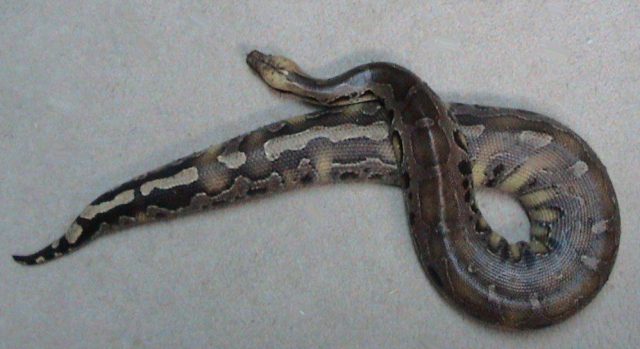Type the name of the breed you're looking for below
[wpdreams_ajaxsearchlite] Don't see the breed your're looking for? Click here and let us know!
Blood Python
| Place of Origin and Range | Found in south east Asia in southern Thailand, Malaysia (Peninsular and Sarawak) (including Pinang) and Indonesia (Sumatra, Riau Archipelago, Lingga Islands, Bangka Islands, Mentawai Islands and Kalimantan). |
| Description | A heavily built snake. The tail is extremely short relative to the overall length. The colour pattern consists of a beige, tan or greyish-brown ground colour overlaid with blotches that are brick to blood-red in colour. |
| Morph Patterns Available | Yes |
| Adult Size | Can grow up to 9 feet ( 2.7m) |
| Accommodation | Occurs in rainforests where it is found in marshes, swamps and along river banks and streams. Plenty of branches for climbing. Leafy plants will provide the required humidity and hides. You will always want to include a large dish for bathing and soaking in to improve shedding. Always include a day basking spot at 80'F(27'C). Along with multiple hides. Minimum 2 x 2 x 4 feet for an adult. |
| Lifespan | Can live 15+ years |
| Feeding / Diet | Lizards(Newborns), mice, and rats. Depending on the size of your snake. No bigger than the diameter of the thickest part of the snake. |
| Breeding | Oviparous, females seldom lay more than a dozen large eggs (however, much larger clutches have been reported). The female remains coiled around the eggs during the incubation period, and may shiver to produce heat. However, this action requires a lot of energy and the female will only do so if surrounding temperatures drop below 90 degrees Fahrenheit. The hatchlings emerge after 2.5 to 3 months and are about 30 cm (12 inches) in length. |
| Other Considerations | They are often regarded as unpredictable and aggressive, but captive bred individuals tend to be more docile than wild-caught specimens.The blood python has been extensively harvested for leather, an estimated 100 000 individuals are taken for this purpose each year. The commercial trade regards this as a single species. Authors who elevate these island populations to species note that skins are readily distinguished. |



